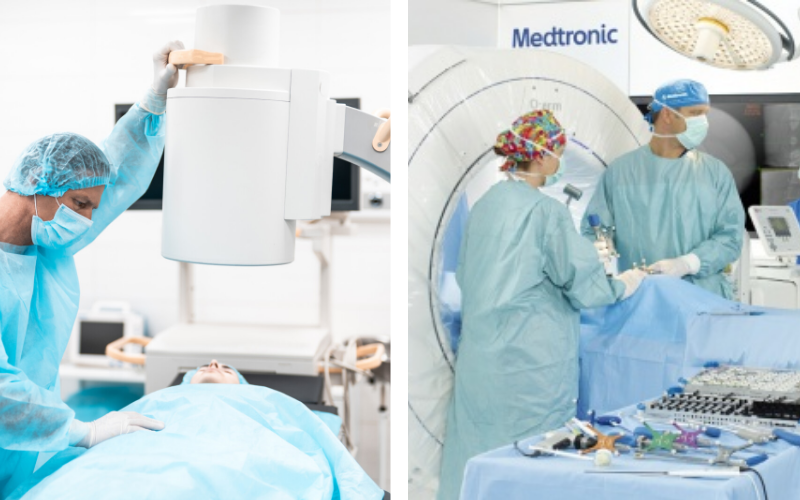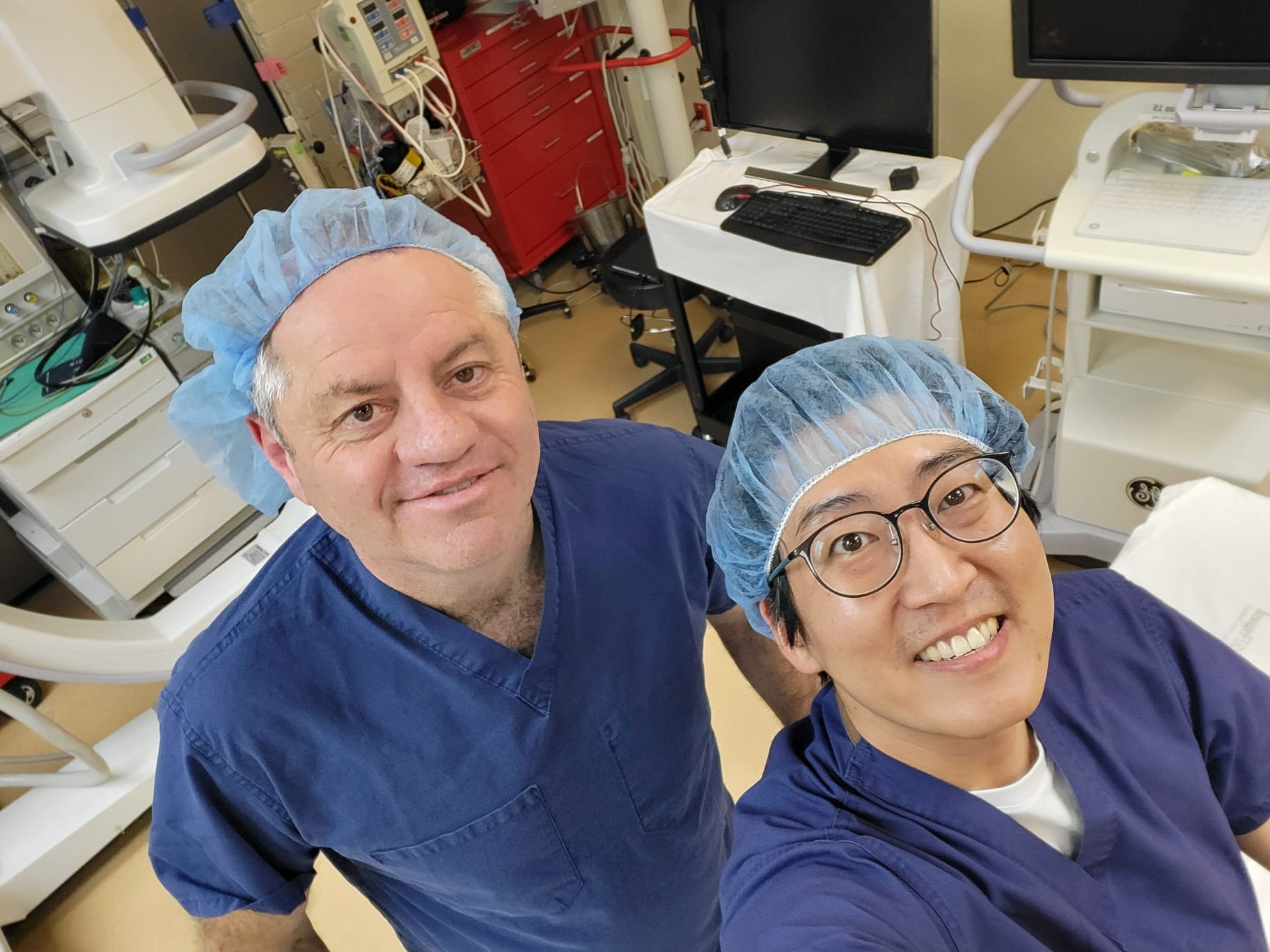Our Investment in Provect: How AI is Transforming Existing CAPEX
Artificial intelligence is augmenting machinery across industries, with mobility and manufacturing currently at the forefront. With numerous applications including predictive maintenance, real-time decision-making, and quality control, our hope is that AI will make existing equipment significantly safer and more productive.
Distinct from that is the ambition to go beyond optimization, and instead expand machine capabilities - ultimately creating new use cases and revenue opportunities from existing machines. Inspired by this vision, we are thrilled to announce our investment in ProvectAI. The founding team led by Dorian Averbuch is first applying their 2D-to-3D transformation engine to intraoperative spinal surgery imaging.
Transforming the Economics of Healthcare CAPEX
The high cost of 3D medical imaging equipment has previously been a barrier for outpatient facilities and lower volume hospitals, limiting the types of procedures their surgeons can reliably perform. Minimally invasive spine surgery (in spine fusions up to multilevel surgeries for degenerative scoliosis) aims to avoid large incisions, excess muscle dissection, and blood loss in order to improve patient outcomes. Precise, intraoperative (real-time) imaging systems are imperative to perform these types of surgeries reliably.
There are three common mobile CT scanners used to provide detailed, 3D anatomical views - the O-Arm, Cone-Beam CT, and 3D C-Arm - ranging in price from $400,000 to $1 million per system. To justify the purchase of a Mobile CT scanner for 3D intraoperative imaging, we estimate a facility would need to perform at least 400 procedures annually. As a result, less than 20 percent of hospitals and surgical facilities in the United States have the patient volume to support such an investment. Ambulatory surgical centers and smaller practices rely on 2D imaging systems priced between $40,000 and $100,000. Most hospitals maintain a fleet of these 2D imaging machines, and, ambulatory surgical centers have at least a couple of those.

While a two-dimensional fluoroscopy x-ray is more accessible, today it has significant limitations. Without intraoperative CT with a 3D or axial cut, the surgeon is unable to get an understanding of the spatial relationship between the tool and the patient's tissue. Beyond cost, there are other barriers to acquiring CT scanners including the high radiation to patient and staff and cumbersome size for smaller facilities.
Dorian Averbuch, founder of Provect AI, understands these needs having previously built Body Vision Medical to enable intraoperative imaging for pulmonary applications. In 2023, Dorian, with a small team of product and technology leaders, built conviction in a market opportunity outside of pulmonary. By the end of the year, they had developed an MVP that could reconstruct a CT quality image out of few x-ray frames. The team was joined by Dr. Albert Kwon, Stanford professor and interventional pain management doctor.

Our Investment in Provect
Provect’s technology gives physicians the ability to interact with a real-time 3D representation of a patient’s anatomy using existing 2D X-ray equipment during interventional procedures. The result is greater visibility and precision, resulting in lower-risk procedures while maintaining minimal radiation exposure.
Currently, Provect can generate synthetic 2D X-rays from CT scans to train its model, which reconstructs a synthetic 3D representation. The accuracy of this process is validated by comparing the 3D output to the original CT data. While traditional models require 100,000 images for effective training, Provect achieved this with only 500 CT scans—a significant breakthrough. By 2025, Provect aims to reduce the required data even further, needing no more than six frames to generate a 3D result.
What stood out to us when we met Dorian was his deep understanding of and empathy for his end user – the surgeon. His insights were driven by collaborative engagement with physicians and hospital systems. Alongside our conviction in the teams expertise is also the belief that AI’s impact on existing CAPEX doesn’t stop at 10-20% efficiency gain. Dorian’s technology and expertise in medical imaging can allow existing CAPEX to deliver greater value.
Key Impact of AI-Enhanced 3D Imaging
Provect can expand a facility’s ability to operate by making previously high-risk surgeries less dangerous, creating greater revenue potential for outpatient facilities and low-volume hospitals. There are roughly 1.5 million spinal procedures performed each year that require hardware placement/implant. The ASC market, which does roughly 10 percent of these surgeries versus in hospitals, is an estimated annual opportunity of up to $225M.
Precision and safety: 5 to 15 percent of surgeries conducted without advanced imaging navigation result in screw misplacements, and roughly a quarter of these require revision surgery. Ideally, the physician can rule out misplacement of screws at the time of surgery. The use of intraoperative 3D imaging can reduce the rate of screw misplacement significantly, with studies showing misplacement rates closer to 1 percent.
Radiation exposure: There is a growing industry effort to limit excess radiation exposure to surgeons, operating room staff, and patients. Radiation dose has been a key limiting factor for using CT intraoperatively. When a physician uses 2D fluoro without Provect’s technology, they are taking hundreds of shots to try to capture an accurate view. Provect’s use of AI results in fewer frames needed and as a result, significantly decreased radiation exposure.
Use of advanced navigation systems and surgical robots: A surgeon cannot use a navigation system without 3D imaging. Provect would enable the use of navigation systems in centers that didn't previously have access because they lacked a 3D imaging equipment.
"Precision and safety are paramount in minimally invasive spine surgeries. Provect’s technology not only reduces the need for numerous fluoroscopic images, thereby lowering radiation exposure, but also saves time and makes advanced navigation systems accessible to facilities previously unable to support 3D imaging equipment. This represents a major leap forward in surgical precision and safety."
Dr. Ray Oshtory, a Stanford-trained orthopedic spine surgeon specializing in minimally invasive procedures.
AI in CAPEX: Future of Healthcare
Provect's first clinical application focuses on spine surgeries and pain management procedures, covering interventions around the spine represented by 100 existing CPT codes with the goal of a universal 2D to 3D transformation engine designed for expansion to broad clinical applications.
AI-driven solutions are transforming CAPEX in healthcare by making advanced imaging more accessible and cost-effective. If you are building in this space, we’d love to learn more. Contact us at bri@newfundcap.com.

